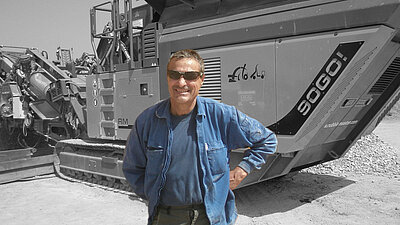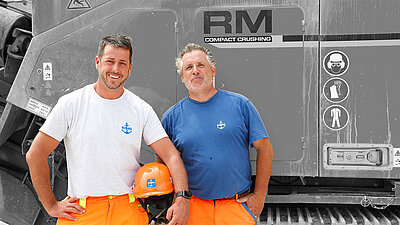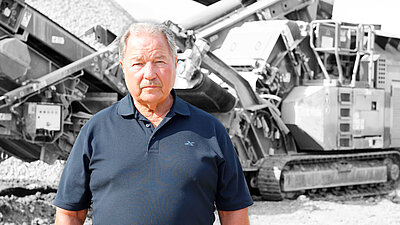Mobile Impact Crushers
Ideal for recycling, primary and secondary crushing applications.
Ideal for recycling, primary and secondary crushing applications.
Ideal for recycling, primary and secondary crushing applications.
Mobile impact crushers recycle concrete and asphalt and process natural rock. They are easy to move on and between job sites, which allows you to utilize the machine on more jobs. Best of all, they come with an onboard screen attachment to produce spec material in a single pass, eliminating the need for additional screening equipment plant.
Mobile impact crushers can process a variety of input materials, including reinforced concrete and asphalt, as well as soft and medium-hard rock.
The machine can be adjusted to produce a multitude of finished products with superior cuboid product shape and gradation that meets spec. The high-reduction ratio produces enough fines for compaction.
In most cases, you can produce commodity-type products without additional crushing stages.
RUBBLE MASTER builds the most versatile, job-friendly suite of mobile impact crushers available. We unite performance and mobility so that you can tackle more jobs and grow your business faster.
Are you ready for the production without the hassle?
Mobile impact crushers featuring a high throughput capacity without sacrificing mobility.

Making money has never been this easy. We build machines that are simple to operate and easy to maintain so that even novice operators dominate the jobsite from day one.
Safety is our top concern so that you can trust your guys around the machine.
Don’t just take our word for it.

“I am impressed by the quality of my RUBBLE MASTER crusher. The support is top-notch. We have had our machine for over 2 years without any issues.”
Ramón Fitó
Excavacions I Transports Fitó, S.L.
Spain

“Comparable crushers consume three times the amount of fuel of our RM 120X. Depending on the application, we manage an average of just 30 liters per hour. Besides, they are also surprisingly quiet, which makes local residents happy too."
Urs Fischer
Züricher Recyclingwerke
Switzerland

“What makes a RUBBLE MASTER a RUBBLE MASTER is its compact dimension and the high throughput capacities that we achieve paired with an easy radio remote controlled operation.”
Dave Schielein
Ironhustler Excavating
United States
Since 1991, RUBBLE MASTER has brought numerous innovations to the market. We’re crushing & screening experts and work closely with contractors and aggregate producers world-wide.